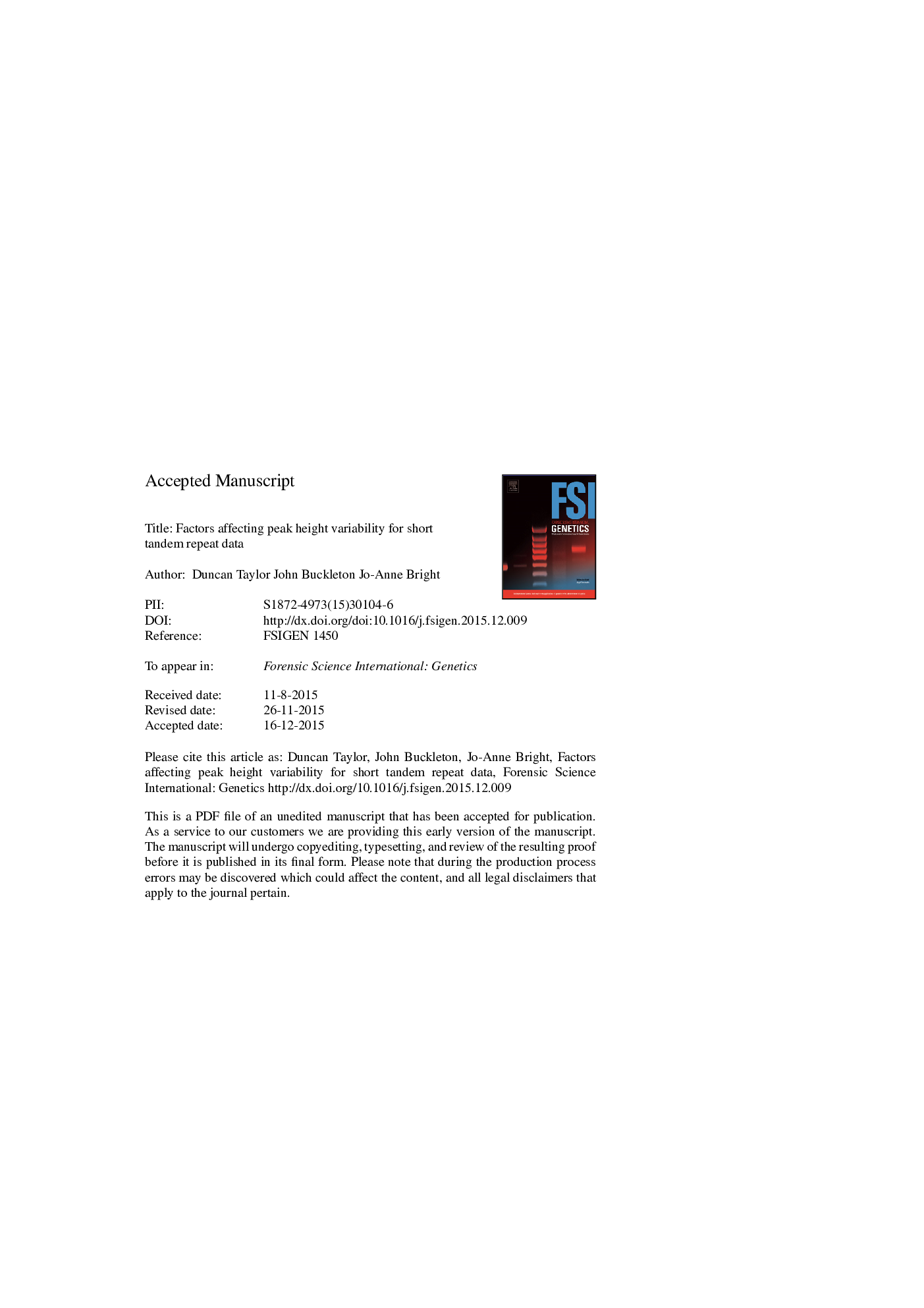| Article ID | Journal | Published Year | Pages | File Type |
|---|---|---|---|---|
| 6553624 | Forensic Science International: Genetics | 2016 | 26 Pages |
Abstract
In forensic DNA analysis a DNA extract is amplified using polymerase chain reaction (PCR), separated using capillary electrophoresis and the resulting DNA products are detected using fluorescence. Sampling variation occurs when the DNA molecules are aliquotted during the PCR setup stage and this translates to variability in peak heights in the resultant electropherogram or between electropherograms generated from a DNA extract. Beyond the variability caused by sampling variation it has been observed that there are factors in generating the DNA profile that can contribute to the magnitude of variability observed, most notably the number of PCR cycles. In this study we investigate a number of factors in the generation of a DNA profile to determine which contribute to levels of peak height variability.
Keywords
Related Topics
Life Sciences
Biochemistry, Genetics and Molecular Biology
Genetics
Authors
Duncan Taylor, John Buckleton, Jo-Anne Bright,
